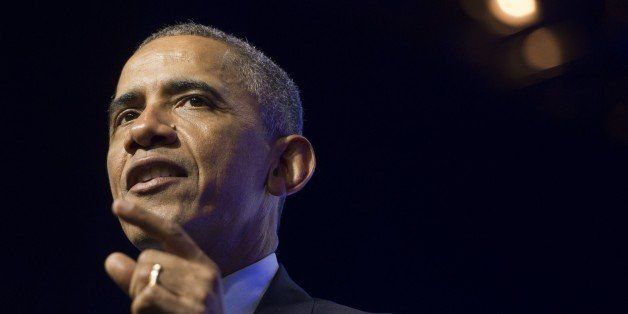
It is a sad fact that mass incarceration affects African-Americans more than any other ethnic group in modern day America. A third of African-American men can expect a custodial sentence at some point in their adult lives. They are imprisoned at a rate nearly six times higher than their white counterparts. Among families, there are only 83 free males for every 100 females -- which explains why so many children in the family unit are raised by mother, and mother alone.
Just like last week and the week before, another black man will be going to prison. But the tragedy stops here. This man is not a criminal or a hopeless recidivist. This man is Barack Obama, the first sitting President of the United States to tour a federal prison -- El Reno in Oklahoma.
Obama will meet with prisoners, staff and other law enforcement officials. His visit will be filmed by VICE as part of a documentary on the U.S. criminal justice system set to air this fall on HBO. Obama is expected to use the visit to urge reform of sentencing and other criminal justice laws.
The Obama administration has made clear its commitment to criminal justice reform this week, starting with the president's commutation of sentences for 46 non-violent offenders in federal prison.
"We should not be tolerating overcrowding in prison, we should not be tolerating gang activity in prison, we should not be tolerating rape in prison -- and we shouldn't be making jokes about it in our popular culture," said the president at the annual NAACP convention in Philadelphia on Tuesday. "That's no joke. These things are unacceptable."
But is it a case of too little too late?
Yes, unfortunately. For decades, the political establishment and mainstream media outlets ignored the facts, figures and astronomical operating costs. Not surprisingly Americans, on the whole, were in the dark about the extent of the problem. Not anymore. Reforming the criminal justice system is now a mainstream issue in the political and public world.
How did this sad state of affairs come about in America, the enlightened republic of historical imagination? How did the land of the free become the home of the jailed? Three strikes, the war on drugs, and mandatory minimum sentencing were prominent factors that contributed to the record number of approximately 2.3 million people behind bars.
And precedent or not, visiting an extract of a problem in an Oklahoma prison is a gesture and not a solution by any means. For there is no quick fix to the quagmire of mass incarceration. It will take decades to solve because the problem was decades in the making.
But as crime is a fact of life, we have to consider how best to punish it while protecting the public. How do we try to change whatever it was that brought someone into trouble with the Law? If that proves impossible, what is the best way that society can protect itself? Whole libraries exist on both sides of the argument. The great minds of the past, and present, have occupied themselves with the subject of punishment and rehabilitation and it costs the taxpayer billions. Yet why does it still seem so intractable?
Because prison has become a huge part of American life. One American adult in 35 is in prison, on parole or probation. And reducing the jail and prison population is a mission impossible. Even if they released all of the non-violent offenders, America would still have a high jail and prison population.
Change in the political world is slow. And reforming the correctional system is no vote winner -- not even in a democracy as purportedly enlightened as America. It speaks volumes about the effect of imprisonment, recidivism, and how to make money from both. It is in the vested interests of corporations like CCA to keep jails and prisons 90 percent full, with no mind to rehabilitation and revolving doors. If you are an investor, directly or indirectly, it is in your best interests to keep it that way. It is, after all, an $80 billion business.
Obama came, he saw, he failed to conquer. But at least the outgoing president, and the first African-American to hold that high office, is seeing prison conditions for himself. As for the 21st Century problem of mass incarceration, that's an issue for the next administration to tackle. And the one after that.
